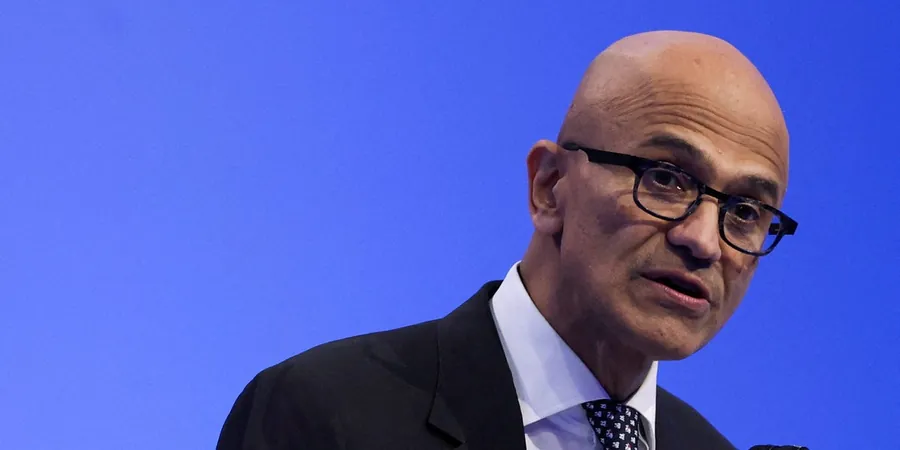
Microsoft's Bold Return-to-Office Strategy: Why In-Person Workers Are 'Thriving'!
2025-09-11
Author: Ken Lee
Microsoft's New Stance on Office Life
In a revealing town hall meeting, Microsoft executives laid out their reasons for enforcing a tougher return-to-office (RTO) policy, presenting eye-opening internal data that suggests employees working in the office are not just surviving but truly "thriving."
CEO Satya Nadella's Eye-Opening Insights
CEO Satya Nadella underscored the unexpected repercussions of remote work during the pandemic, highlighting the essential role social connections play in fostering innovation. He stated, "The unintended consequence of remote work is that social ties—those 'weak ties'—have become even weaker, while strong connections have solidified. Forming new relationships? That's a challenge right now." This stark observation, he claimed, reveals a critical issue in organizational dynamics.
Data-Driven Decisions: The 'Thriving Score'
HR Chief Amy Coleman echoed Nadella’s sentiments, revealing that extensive internal research shows employees who frequent the office at least three days a week report a significantly higher "thriving score." Though she kept the specifics of this scoring system under wraps, Coleman noted it reflects workers who feel energized, empowered, and fulfilled in their roles.
Current Office Trends Among Employees
Interestingly, Microsoft employees in the Seattle area are already coming into the office an average of 2.4 days a week, which means for many, this policy shift may not feel drastic. Coleman remarked, "So for some, this is not a big change."
Flexibility and Empowerment Remain Key
While reinforcing the RTO mandate, Nadella assured employees that flexible work options would still be viable, tailored to the unique needs of different teams. For instance, the AI division has adopted stricter guidelines compared to other departments.
"This doesn't negate our acknowledgment of flexible work's benefits," Nadella emphasized. "Empowerment is crucial. Teams have the autonomy to shape their own in-office arrangements in a way that best supports their objectives."
What’s Next?
As Microsoft pivots back to a more structured office environment, the implications for corporate culture—and the nuances of work-life balance—remain to be fully seen. Will this strategy unlock innovation and collaboration? Only time will tell. Stay tuned!




 Brasil (PT)
Brasil (PT)
 Canada (EN)
Canada (EN)
 Chile (ES)
Chile (ES)
 Česko (CS)
Česko (CS)
 대한민국 (KO)
대한민국 (KO)
 España (ES)
España (ES)
 France (FR)
France (FR)
 Hong Kong (EN)
Hong Kong (EN)
 Italia (IT)
Italia (IT)
 日本 (JA)
日本 (JA)
 Magyarország (HU)
Magyarország (HU)
 Norge (NO)
Norge (NO)
 Polska (PL)
Polska (PL)
 Schweiz (DE)
Schweiz (DE)
 Singapore (EN)
Singapore (EN)
 Sverige (SV)
Sverige (SV)
 Suomi (FI)
Suomi (FI)
 Türkiye (TR)
Türkiye (TR)
 الإمارات العربية المتحدة (AR)
الإمارات العربية المتحدة (AR)